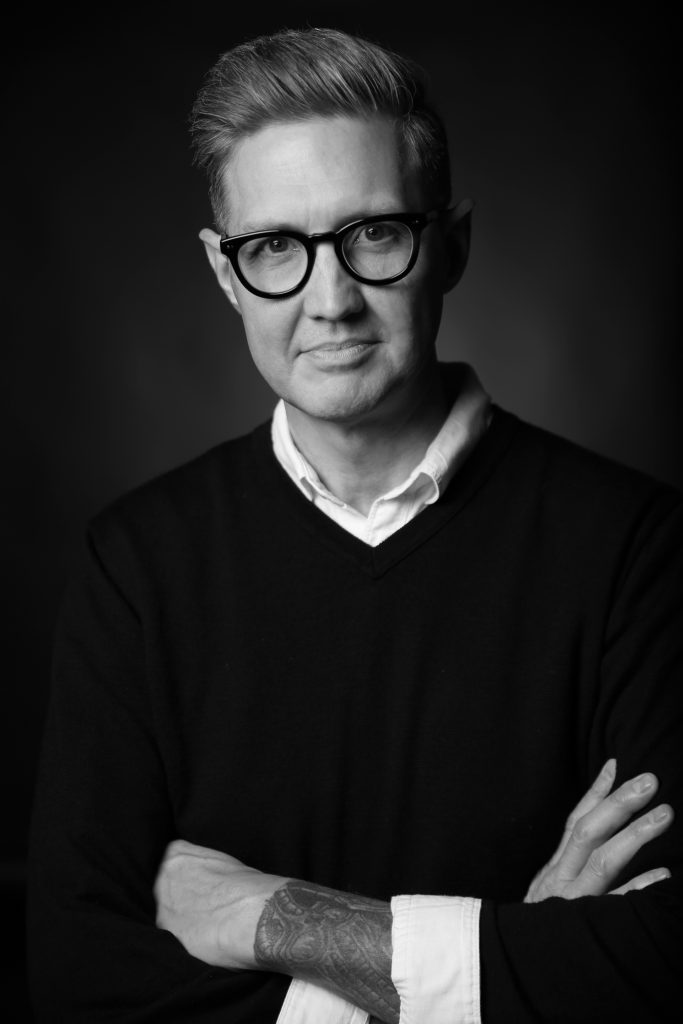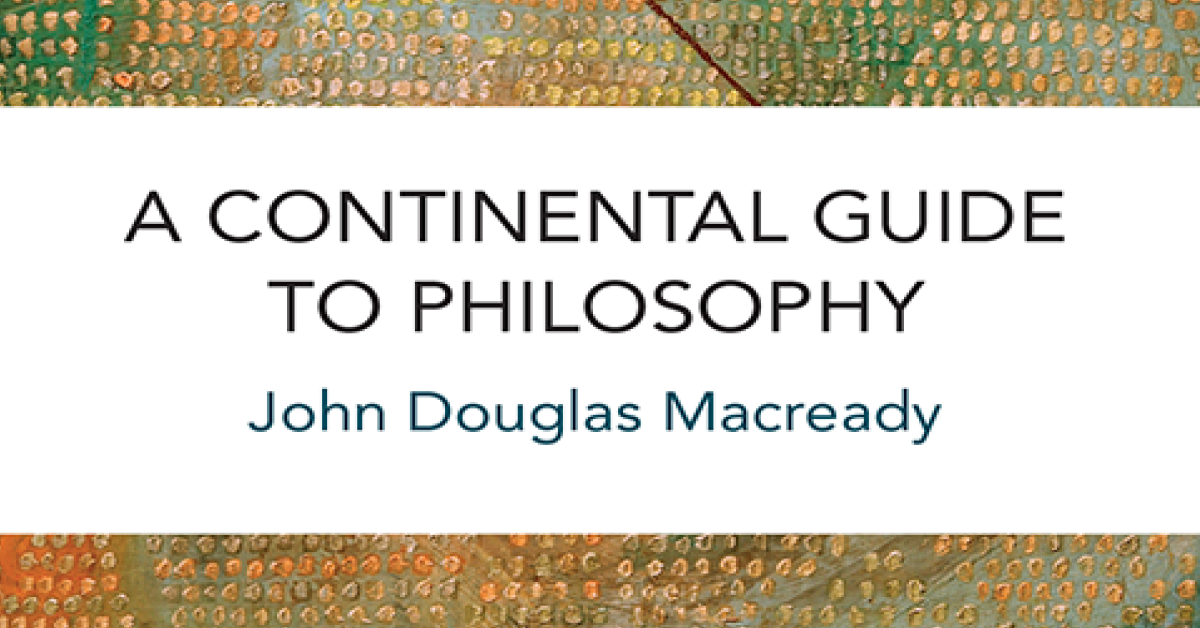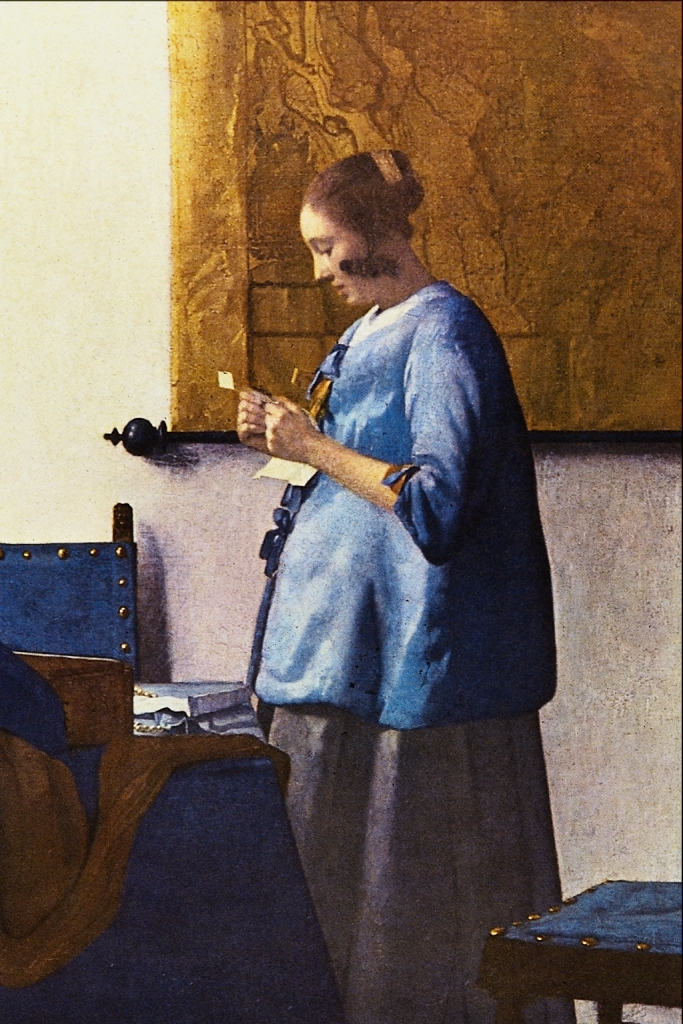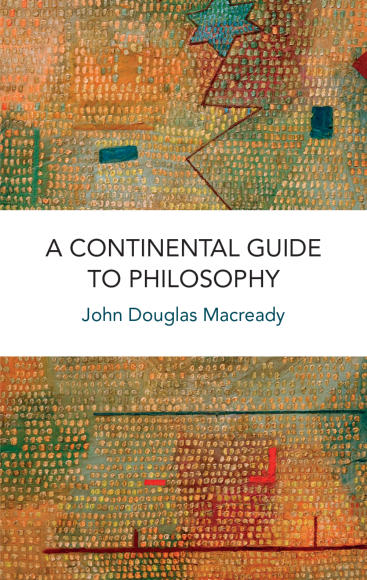
by John Douglas Macready
The history of philosophy can be thought of as an art gallery filled with paintings by various artists. Each painting is a representation of reality from a particular perspective and makes use of distinct methods and styles to express what each artist conceives. Although painting and philosophy might seem very different, both disciplines share a creative impulse. Painters create images and philosophers create concepts. If questions are the engine of philosophy, concepts are its product. Concepts are the way we get a grip on reality; they are intellectual paintings of reality. Philosophy, then, is the ongoing inquiry into reality and the perpetual creation of concepts that allow us to come to terms with that reality in order to live more authentically.
A Continental Guide to Philosophy is a gallery tour through the history of philosophy from the perspective of continental philosophy. Continental philosophy is a broad tradition of inquiry within philosophy that originated on the continent of Europe and encompasses a wide variety of theoretical orientations (e.g. phenomenology, existentialism, critical theory, psychoanalysis) and methodologies (e.g. structuralism, post-structuralism, hermeneutics, deconstructionism). It has its origins in the critical philosophy of Immanuel Kant and the subsequent reactions to his thought in the nineteenth and twentieth centuries by philosophers such as G. W. F. Hegel, Friedrich Nietzsche, Henri Bergson, Edmund Husserl, Martin Heidegger, Jean-Paul Sartre, Maurice Merleau-Ponty, Frantz Fanon, Gilles Deleuze, Emmanuel Levinas, Hannah Arendt, and others. Although continental philosophy is theoretically diverse, it has four main conceptual orientations that inform the interpretations of the six philosophers considered in the book[1].
First, continental philosophy is oriented toward the immanence of our lived experience instead of the transcendence of abstract ideas. Continental philosophy takes our embodied existence in time as its starting point for inquiry.
Second, continental philosophy emphasizes the priority of difference and multiplicity in our immanent experience instead of sameness and unity. In emphasizing difference, continental philosophy seeks to challenge the idea that everything can be understood or explained through a single idea or unifying principle and instead attends to how difference is a fundamental and inescapable feature of reality.
Third, continental philosophy seeks to turn language, which is governed by logic, into an activity of thinking that is beyond logic, and therefore open to difference and variation within our immanent experience.
Fourth, continental philosophy seeks to challenge the idea that the whole of reality (essence) can be given or exhausted in our fixed categories and concepts, and it seeks to foster the perpetual creation of new concepts that account for the differences we encounter in our immanent experience (existence).
So, the gallery tour offered in A Continental Guide to Philosophy attends to these themes, emphasizing the transitions from transcendence to immanence, from unity to plurality, from language to thinking, and from essence to existence.
The tour begins by considering Plato’s answer to the metaphysical question, “What is real?” Plato was searching for an unchanging, transcendent reality that could serve as an objective measure for the changing reality he encountered through his senses. He thought he had located this reality in an intelligible realm of forms that our minds have access to through the medium of language, but difference haunts the reality Plato discovers. After Plato, we examine René Descartes’ answer to this same question. Descartes’ historical situation led him to answer the question in a very different way. In the wake of the scientific revolutions initiated by Kepler, Copernicus, and Galileo, and the declining intellectual authority of Christianity, Descartes conceived reality as substance and developed a scientific method for knowing this reality with certainty. The inquiries of Plato and Descartes into the nature of reality assume a fundamental distinction between reality and illusion, and both created new concepts that allowed them to articulate the features of reality in language and avoid being duped by illusions.

Johannes Vermeer’s ‘Woman in Blue Reading a Letter’ 
Han van Meegeren’s ‘Woman Reading Music’
We end our tour by exploring Friedrich Nietzsche’s and Hannah Arendt’s answers to the ethical question, “How might we live authentically?” The use of “might” rather than “should” suggests that there are many possibilities for living an authentic life. Nietzsche and Arendt wrote during historical periods when absolute standards and values had lost their authority, and humanity faced the task of creating new values and concepts to live by. Nietzsche saw the creative life of the artist as an authentic way of living because the artist created his or her own life like a work of art that contributes to culture. In contrast, Arendt argued that political life was the most authentically human way of life. She emphasized the need for human beings to act together to build and sustain a common world through their words and deeds. Both ways of life are possibilities for living one’s life, but they are not the only possibilities. My sincerest hope is that by the end of A Continental Guide to Philosophy, you will have started thinking about how you might live authentically.
Although Plato and Descartes thought we could know reality, David Hume was not so sure. He thought the rationalists were trafficking in illusions when it came to reality, and that if we understood how the mind worked, we could avoid falling into these illusions. Hume’s answer to the question “How can we know what is real?” is an empiricist answer: we know reality primarily through the senses, and only secondarily through reason. In this way, Hume reorients us back to the plurality of our bodily and sensory experience of the world. After Hume, we turn to Immanuel Kant, who attempted to reconcile the competing views of the rationalists and empiricists. Kant showed us how our knowledge of reality is the product of both concepts and experience, but he also showed us how limited our knowledge of reality actually is.
A Continental Guide to Philosophy is out in December 2021!
Helps you understand the central debates in the three main branches of Continental philosophy: metaphysics, epistemology, and ethics
- Defines key terms like forms (Plato), substance (Descartes), impressions (Hume), transcendental (Kant), culture (Nietzsche), and action (Arendt) at the beginning of each chapter
- Teaches you how to read philosophical texts by introducing you to 5 elements that can be analysed in every text: question, concept, claims, evidence, and implications
- Includes chapter summaries, questions for further discussion to help you consolidate your own ideas, and a historical timeline to contextualize each philosopher’s life and work
About the author

John Douglas Macready a Professor of Philosophy at Collin College in Plano, Texas, He is the author of Hannah Arendt and the Fragility of Human Dignity (Lexington, 2018) and A Continental Guide to Philosophy (Edinburgh University Press, 2021).
[1] The conception of continental philosophy as expressive of four features is drawn from Leonard Lawlor’s Early Twentieth-Century Continental Philosophy (Bloomington: Indiana University Press, 2012), viii.








